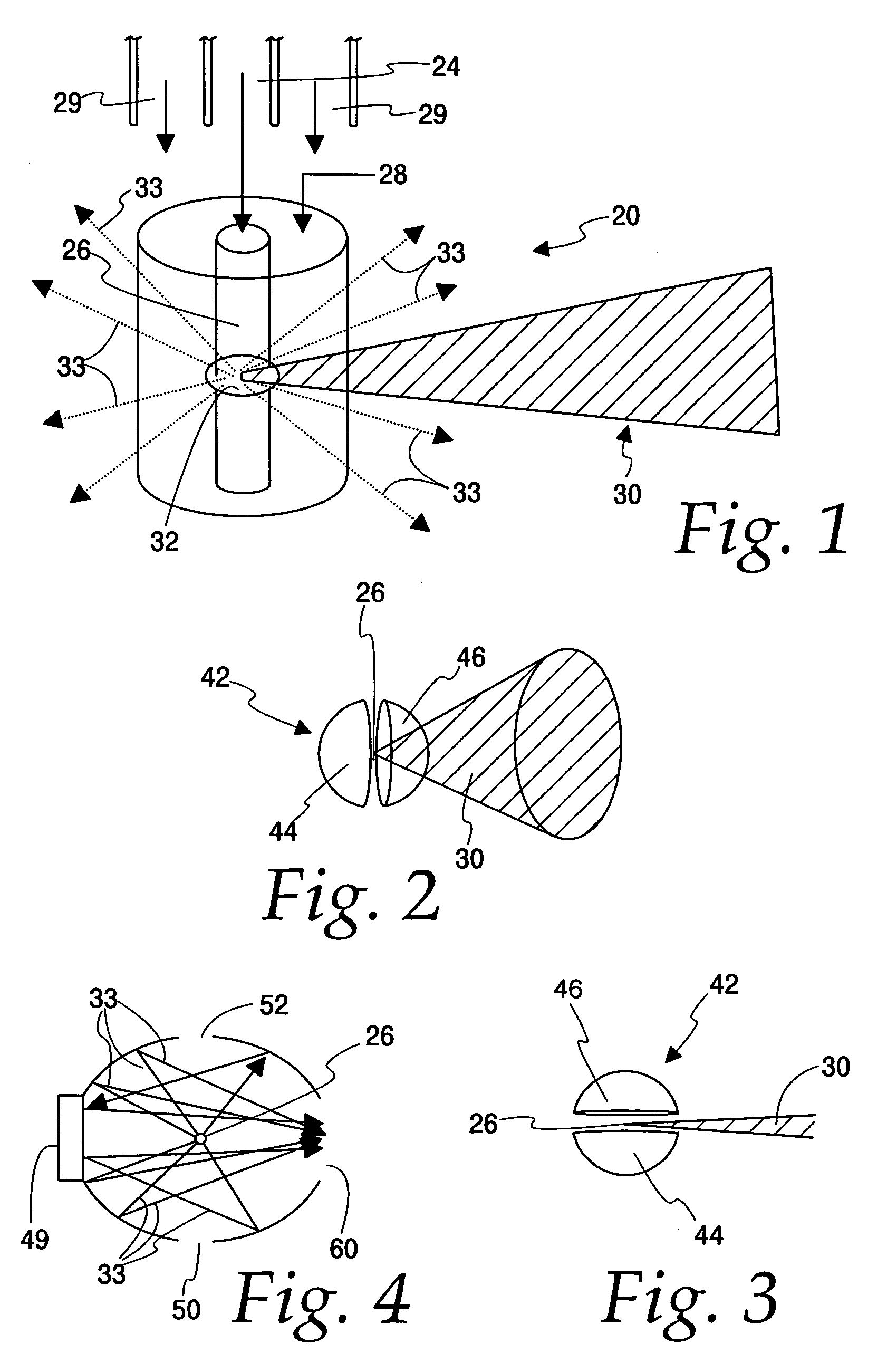High-efficiency, low-debris short-wavelength light sources
- Summary
- Abstract
- Description
- Claims
- Application Information
AI Technical Summary
Benefits of technology
Problems solved by technology
Method used
Image
Examples
Embodiment Construction
[0042]In the following detailed description of the preferred embodiments, the same reference numeral will be used to identify the same item in each of the drawings. As seen in FIG. 1, a system 20 in accordance with the present invention includes a nozzle 24 emitting a continuous source of radiating source material 26, a gas “cocoon”28 emitted from a nozzle 29, a CO2 laser beam 30 for heating the radiating material 26 to a temperature where it becomes a plasma 32 radiating light 33 in nearly all directions.
[0043]Source materials 26 useful in the present invention are acted upon by laser light 30 or a discharge process or both to radiate short-wavelength light 34. The source material 26 can include a primary radiating material (“hot source material”), and may include a carrier such as a gas of low atomic weight, such as H2 or He, in which the primary radiating material is embedded. The primary radiating material can also be embedded in water droplets. For lithography applications, typ...
PUM
 Login to View More
Login to View More Abstract
Description
Claims
Application Information
 Login to View More
Login to View More - R&D
- Intellectual Property
- Life Sciences
- Materials
- Tech Scout
- Unparalleled Data Quality
- Higher Quality Content
- 60% Fewer Hallucinations
Browse by: Latest US Patents, China's latest patents, Technical Efficacy Thesaurus, Application Domain, Technology Topic, Popular Technical Reports.
© 2025 PatSnap. All rights reserved.Legal|Privacy policy|Modern Slavery Act Transparency Statement|Sitemap|About US| Contact US: help@patsnap.com



